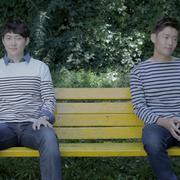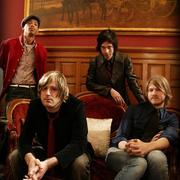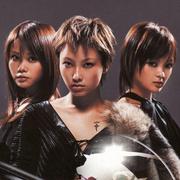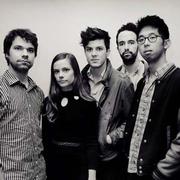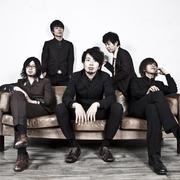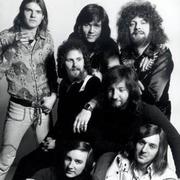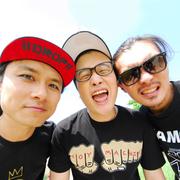Yellow Magic Orchestra
| 基本信息 | |||
|---|---|---|---|
| 姓名 | Yellow Magic Orchestra | 别名 | 暂无 |
| 国籍 | 日本 | 出生地 | |
| 语言 | 性别 | 组合 | |
| 生日 | 星座 | ||
| 身高 | 体重 | ||
細野晴臣(ベース)
エイプリルフール、はっぴいえんど、ティンパンアレーを経て、YMOを結成。YMOのリーダープロデューサーであり、シンセサイザーとコンピュータを用いるYMOの音楽スタイルを打ち出した。宗教や民俗学など神秘主義的な趣味があり、それらもYMOに影響を与えている。ライブではほぼベーシストに徹し、特筆すべきはシンセサイザーをベース代わりに演奏していたことである(ただし、曲によってはエレクトリックベースを使用している部分もある)。YMO散開後は特にアンビエント、エレクトロニカ等のジャンルを取り入れている。
高橋幸宏(ドラムヴォーカル)
サディスティックミカバンド、サディスティックスを経てYMOに参加。YMOをきっかけに機械のビートと同期してドラムを演奏した最初期のドラマーである。また、ライヴではドラムを叩きながら自らヴォーカルをとるという異色なスタイルで演奏していた。ファッションデザインの技能を生かしてYMOではステージ衣装のデザインを手掛けた。YMO散開後はソロ活動とともに、様々なミュージシャンとのコラボレーションやプロデュース業を展開している。
坂本龍一(キーボード)
YMOで唯一、音大出身のミュージシャン。スタジオミュージシャンとして活動した後、YMOに参加。YMOでは松武秀樹とともにレコーディングにおいて楽曲を構築する重要な役割を果たし、またライヴでは楽曲のアレンジを一手に引き受けた。YMO散開後は映画音楽で成功するなどソロ活動を展開している。
担当パートについては主に演奏されるものであり、一部のレコーディングやライブ、TV番組では上記以外のパートを担当することもあった。 YMOは元々はコンセプトバンドとして構想されたものであり、細野はメンバーの人員構成は流動的にする考えを持っていたが、ライブなどでサポートメンバーを迎えることはあってもYMOのメンバー自体は最初から最後までこの三人であった。
小简介
1978年,坂本龙一、细野晴臣、高桥幸宏三人组了一支乐队Yellow Magic Orchestra,简称Yellow Magic Orchestra。同年他们发表第一张同名大碟《Yellow Magic Orchestra》,在日本几乎没什么反响。有趣的是,这张大碟1979年在美国发行后,在当地的迪高里大受欢迎。之前的日本乐队虽然也有做电子音乐的,但大多模仿欧美国家,并没有什么创新。再加上语言方面的障碍,很难打开美国市场。但是这张大碟基本使用电脑完成,完全克服了语言上的障碍,而且完全不受既有的民谣、摇滚等形式上的限制,是真正意义上的电子音乐。 在美国一炮而红的Yellow Magic Orchestra很快推出了第二张专辑。这一次他们是衣锦还乡了,日本方面自然一哄而上,销量相当好。这张专辑意义当然不止这些。它在日本开创了Techno这一种新的音乐形式,影响了一代音乐人。音乐不再是曲高和寡的,它可以流行,可以时尚,关键看你怎么做,怎么听。 到了1980年,Yellow Magic Orchestra这支日本最早获得国际成功的乐队已经红透半边天了。他们乘势举办了世界性的巡回演出。1983年底,在武道馆的现场演出时,他们宣布解散。一直到1993年,他们重新聚在一起。这分分合合的几多年,乐队的其他成员或许有些迷茫,不过作为乐队的灵魂人物的坂本龙一可从来没停下过。他大学里学的就是电子音乐和世界音乐。所以风格多变是他的一大特点。从Techno-pop到交响乐再到电影配乐,无一不精。1987年,他为贝托鲁奇执导的电影《末代皇帝》所创作的音乐,为他赢来一项奥斯卡奖。难怪1999年末他推出的个人钢琴独奏专辑《BTTB》,如此内敛静默的唱片竟然成了日本几乎人手一张的超级热卖碟。 Yellow Magic Orchestra的音乐受法国印象派的影响很深,象德彪西、拉威尔、斯特拉文斯基等等。阳春白雪的旋律,加上美式的电子音效,不走红才怪。很多看过现场的人都说他们够酷。清一色红色中山装,面无表情,直挺挺地站在台上。在那个年代,绝对够得上现在e-Man的标准。不过时间已经到了2001年,他们千年不变的造型未免显得土气。在日本音乐史上他们固然是重量级的存在,却也很难再吸引更多年轻的目光。
by Jason Ankeny
The trailblazing force behind the emergence of the Japanese techno-pop sound of the late 70s, Yellow Magic Orchestra remains a seminal influence on contemporary electronic music — hugely popular both at home and abroad, their pioneering use of synthesizers, sequencers and drum machines places them second only to Kraftwerk as innovators of todays electronic culture. YMO was formed in Tokyo in 1978 by keyboardist Ryuichi Sakamoto, who at the time was working on his debut solo LP; among his collaborators was drummer Yukihiro Takahashi, himself also a solo performer as well as a member of the art rock group the Sadistic Mika Band. The third member, bassist Haruomi Hosono, boasted an even more impressive discography, including four solo records as well as a number of production credits.
Agreeing to join forces as Yellow Magic Orchestra, the trio soon debuted with a self-titled LP influenced largely by the robotic iconography of Germanys Kraftwerk; 1979s Solid State Survivor heralded a quantum leap in their sound, with stronger songs and a more focused use of electronic tools, complete with English lyrics by Chris Mosdell. While 1980s Xoo Multiplies was at best a mixed bag including comedy skits and two different covers of the Archie Bell & the Drells classic Tighten Up, Public Pressure captured YMO performing live. Their two 1981 releases, BGM and Technodelic, both delved deeper into synth pop, exploring new stylistic territory anticipating the individual musicians subsequent solo projects. Service, from 1983, again offered skits, this time courtesy of the theatrical troupe S.E.T.
Following the ambitious Naughty Boys and another live record, After Service, Yellow Magic Orchestra disbanded at the peak of their popularity, with its members wishing to revive their respective solo careers. Sakamoto enjoyed the highest visibility of the YMO alumni — a noted film composer, he gained his greatest exposure co-writing the Academy Award-winning score to the 1987 film The Last Emperor. Hosono also pursued film music as well as ambient projects, while Takahashi enjoyed an eclectic and experimental return to his rock roots. By the 1990s, YMO was cited regularly as a pioneer of ambient house music, resulting in the release of the remix album Hi-Tech/No Crime. The original trio then reunited in 1993, recording the LP Technodon before again going their separate ways.
エイプリルフール、はっぴいえんど、ティンパンアレーを経て、YMOを結成。YMOのリーダープロデューサーであり、シンセサイザーとコンピュータを用いるYMOの音楽スタイルを打ち出した。宗教や民俗学など神秘主義的な趣味があり、それらもYMOに影響を与えている。ライブではほぼベーシストに徹し、特筆すべきはシンセサイザーをベース代わりに演奏していたことである(ただし、曲によってはエレクトリックベースを使用している部分もある)。YMO散開後は特にアンビエント、エレクトロニカ等のジャンルを取り入れている。
高橋幸宏(ドラムヴォーカル)
サディスティックミカバンド、サディスティックスを経てYMOに参加。YMOをきっかけに機械のビートと同期してドラムを演奏した最初期のドラマーである。また、ライヴではドラムを叩きながら自らヴォーカルをとるという異色なスタイルで演奏していた。ファッションデザインの技能を生かしてYMOではステージ衣装のデザインを手掛けた。YMO散開後はソロ活動とともに、様々なミュージシャンとのコラボレーションやプロデュース業を展開している。
坂本龍一(キーボード)
YMOで唯一、音大出身のミュージシャン。スタジオミュージシャンとして活動した後、YMOに参加。YMOでは松武秀樹とともにレコーディングにおいて楽曲を構築する重要な役割を果たし、またライヴでは楽曲のアレンジを一手に引き受けた。YMO散開後は映画音楽で成功するなどソロ活動を展開している。
担当パートについては主に演奏されるものであり、一部のレコーディングやライブ、TV番組では上記以外のパートを担当することもあった。 YMOは元々はコンセプトバンドとして構想されたものであり、細野はメンバーの人員構成は流動的にする考えを持っていたが、ライブなどでサポートメンバーを迎えることはあってもYMOのメンバー自体は最初から最後までこの三人であった。
小简介
1978年,坂本龙一、细野晴臣、高桥幸宏三人组了一支乐队Yellow Magic Orchestra,简称Yellow Magic Orchestra。同年他们发表第一张同名大碟《Yellow Magic Orchestra》,在日本几乎没什么反响。有趣的是,这张大碟1979年在美国发行后,在当地的迪高里大受欢迎。之前的日本乐队虽然也有做电子音乐的,但大多模仿欧美国家,并没有什么创新。再加上语言方面的障碍,很难打开美国市场。但是这张大碟基本使用电脑完成,完全克服了语言上的障碍,而且完全不受既有的民谣、摇滚等形式上的限制,是真正意义上的电子音乐。 在美国一炮而红的Yellow Magic Orchestra很快推出了第二张专辑。这一次他们是衣锦还乡了,日本方面自然一哄而上,销量相当好。这张专辑意义当然不止这些。它在日本开创了Techno这一种新的音乐形式,影响了一代音乐人。音乐不再是曲高和寡的,它可以流行,可以时尚,关键看你怎么做,怎么听。 到了1980年,Yellow Magic Orchestra这支日本最早获得国际成功的乐队已经红透半边天了。他们乘势举办了世界性的巡回演出。1983年底,在武道馆的现场演出时,他们宣布解散。一直到1993年,他们重新聚在一起。这分分合合的几多年,乐队的其他成员或许有些迷茫,不过作为乐队的灵魂人物的坂本龙一可从来没停下过。他大学里学的就是电子音乐和世界音乐。所以风格多变是他的一大特点。从Techno-pop到交响乐再到电影配乐,无一不精。1987年,他为贝托鲁奇执导的电影《末代皇帝》所创作的音乐,为他赢来一项奥斯卡奖。难怪1999年末他推出的个人钢琴独奏专辑《BTTB》,如此内敛静默的唱片竟然成了日本几乎人手一张的超级热卖碟。 Yellow Magic Orchestra的音乐受法国印象派的影响很深,象德彪西、拉威尔、斯特拉文斯基等等。阳春白雪的旋律,加上美式的电子音效,不走红才怪。很多看过现场的人都说他们够酷。清一色红色中山装,面无表情,直挺挺地站在台上。在那个年代,绝对够得上现在e-Man的标准。不过时间已经到了2001年,他们千年不变的造型未免显得土气。在日本音乐史上他们固然是重量级的存在,却也很难再吸引更多年轻的目光。
by Jason Ankeny
The trailblazing force behind the emergence of the Japanese techno-pop sound of the late 70s, Yellow Magic Orchestra remains a seminal influence on contemporary electronic music — hugely popular both at home and abroad, their pioneering use of synthesizers, sequencers and drum machines places them second only to Kraftwerk as innovators of todays electronic culture. YMO was formed in Tokyo in 1978 by keyboardist Ryuichi Sakamoto, who at the time was working on his debut solo LP; among his collaborators was drummer Yukihiro Takahashi, himself also a solo performer as well as a member of the art rock group the Sadistic Mika Band. The third member, bassist Haruomi Hosono, boasted an even more impressive discography, including four solo records as well as a number of production credits.
Agreeing to join forces as Yellow Magic Orchestra, the trio soon debuted with a self-titled LP influenced largely by the robotic iconography of Germanys Kraftwerk; 1979s Solid State Survivor heralded a quantum leap in their sound, with stronger songs and a more focused use of electronic tools, complete with English lyrics by Chris Mosdell. While 1980s Xoo Multiplies was at best a mixed bag including comedy skits and two different covers of the Archie Bell & the Drells classic Tighten Up, Public Pressure captured YMO performing live. Their two 1981 releases, BGM and Technodelic, both delved deeper into synth pop, exploring new stylistic territory anticipating the individual musicians subsequent solo projects. Service, from 1983, again offered skits, this time courtesy of the theatrical troupe S.E.T.
Following the ambitious Naughty Boys and another live record, After Service, Yellow Magic Orchestra disbanded at the peak of their popularity, with its members wishing to revive their respective solo careers. Sakamoto enjoyed the highest visibility of the YMO alumni — a noted film composer, he gained his greatest exposure co-writing the Academy Award-winning score to the 1987 film The Last Emperor. Hosono also pursued film music as well as ambient projects, while Takahashi enjoyed an eclectic and experimental return to his rock roots. By the 1990s, YMO was cited regularly as a pioneer of ambient house music, resulting in the release of the remix album Hi-Tech/No Crime. The original trio then reunited in 1993, recording the LP Technodon before again going their separate ways.
 加载评论内容,请稍等......
加载评论内容,请稍等......

